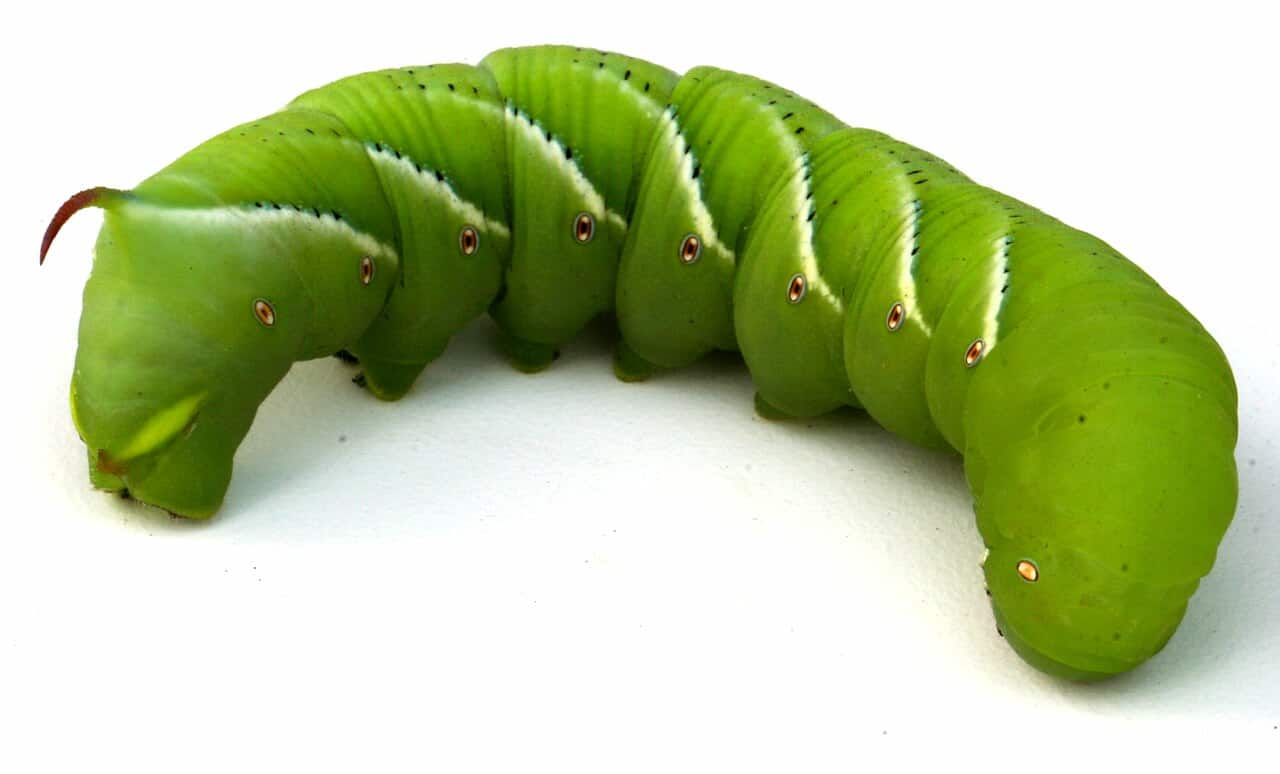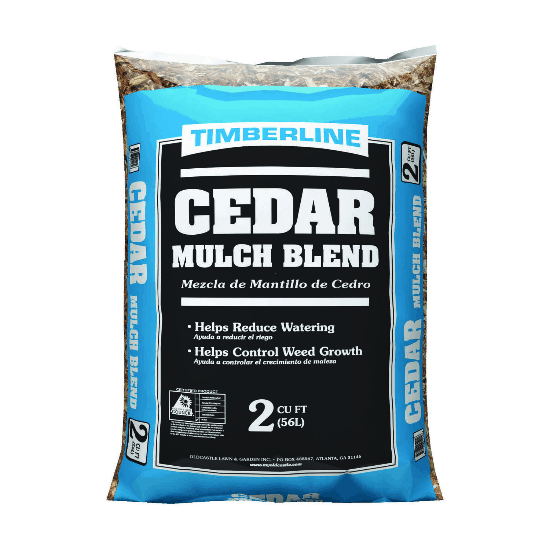Ah, tomatoes. The crown jewel of many a summer garden, their luscious fruit a reward for months of patient tending. But lurking in the shadows, a nemesis awaits: the tomato hornworm. These large, green caterpillars, with their intimidating horns and insatiable appetites, can decimate tomato plants in a matter of days.
Tomato Hornworms: What Are They?
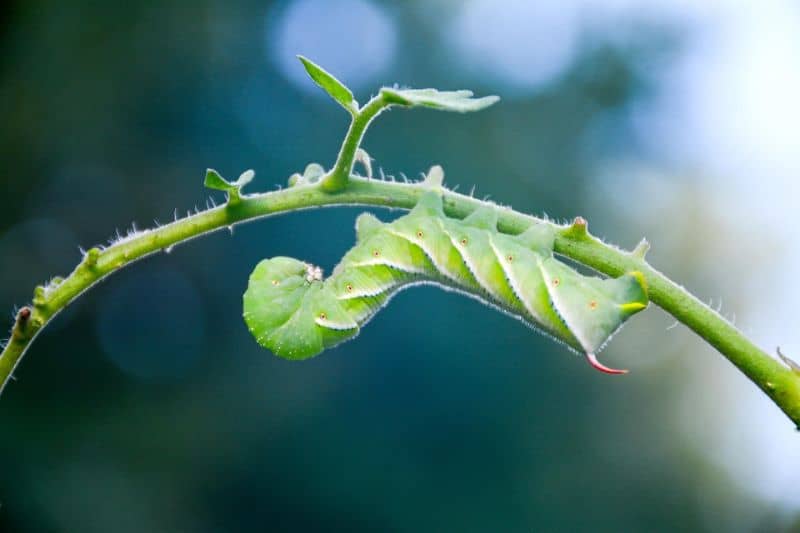
Reaching up to 4 inches in length, tomato hornworms are the larvae of the sphinx moth. They are easily identifiable by their prominent “horn” at the rear end, as well as the diagonal white stripes that adorn their bodies. These voracious eaters have a taste for the leaves and fruit of tomato plants, leaving gardeners with withered foliage and damaged fruit.
Life Cycle of a Tomato Hornworm
The tomato hornworm’s life cycle consists of four stages: egg, larva (caterpillar), pupa, and adult moth.
Eggs: Female moths lay their small, green eggs on the undersides of tomato leaves, typically in clusters of 50 or more. These eggs hatch in 5-7 days.
Larva (Caterpillar): The newly hatched caterpillars are tiny, but they grow rapidly, molting several times as they reach their full size. During this stage, they consume large amounts of foliage, causing significant damage to tomato plants.
Pupa: When the caterpillar reaches maturity, it enters the pupal stage. It burrows into the soil and forms a chrysalis, where it undergoes metamorphosis. This stage typically lasts 2-3 weeks.
Adult Moth: The adult five-spotted hawk moth emerges from the chrysalis. These moths have a wingspan of 4-5 inches and are brown with five distinctive white spots on each wing. They are nocturnal and are attracted to lights. After mating, the females lay their eggs, starting the cycle anew.
Transformation into the Five-Spotted Hawk Moth
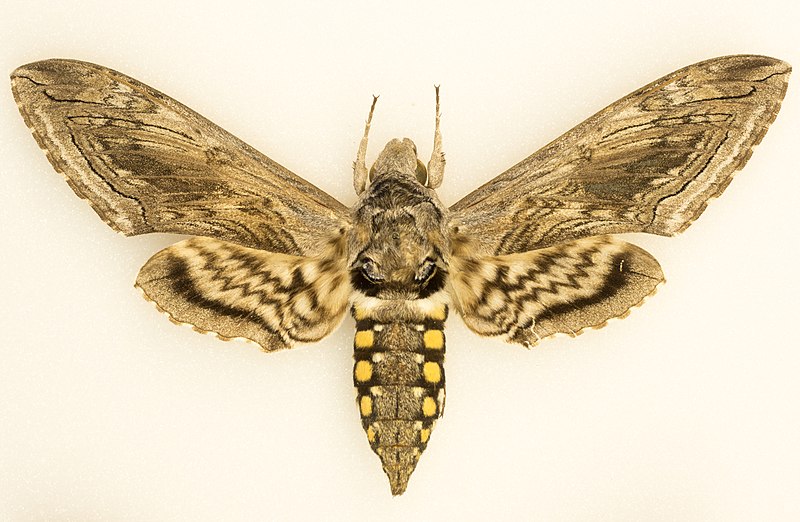
The tomato hornworm undergoes a remarkable transformation during its life cycle. From a voracious caterpillar to a beautiful moth, this metamorphosis is a testament to the wonders of nature.
In the pupal stage, the caterpillar’s body breaks down and reorganizes into the adult moth. This process involves the development of wings, legs, antennae, and other adult structures. When the transformation is complete, the moth emerges from the chrysalis, ready to take flight and continue the cycle of life.
Ways of Prevention & Control
Fear not, fellow gardeners! While tomato hornworms can be a formidable foe, there are a number of effective methods to prevent and control them, ensuring your tomato harvest remains bountiful.
Attract or Release Predatory Insects that Eat Hornworms
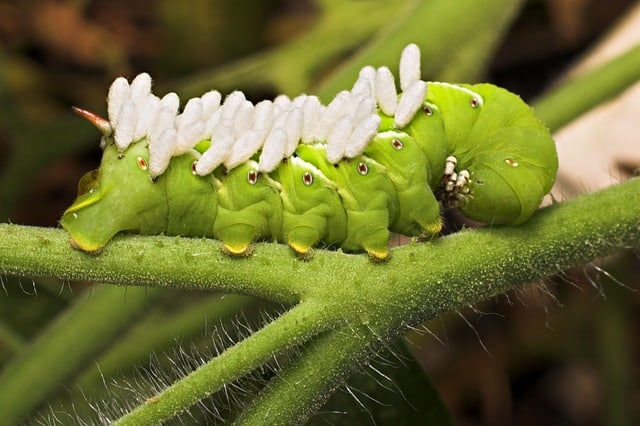
Nature provides a helping hand in the form of natural predators that relish hornworms as a tasty treat. These include ladybugs, lacewings, and parasitic wasps. To attract these beneficial insects to your garden, plant companion flowers such as dill, fennel, and yarrow. You can also purchase and release parasitic wasps specifically bred to target hornworms.
Row Covers
Protecting your young tomato plants with row covers is an effective way to prevent hornworms from reaching them in the first place. These lightweight, mesh-like coverings allow sunlight and water to penetrate while creating a barrier against pests. Make sure the covers are secured at the edges to prevent hornworms from crawling underneath.
Crop Rotation

Hornworms tend to overwinter in the soil, so practicing crop rotation can help break their life cycle. Avoid planting tomatoes in the same location year after year. Instead, rotate your tomato crops with other vegetables, such as peppers, eggplants, or beans. This disrupts the hornworm’s ability to find and infest your tomato plants.
Till the Soil

Tilling the soil in the fall or early spring can help destroy hornworm pupae that are overwintering in the ground. This disrupts their development and reduces the number of adults that emerge to lay eggs the following season.
Use Mulch
Mulching around your tomato plants can be an effective way to deter hornworms. A thick layer of mulch, such as straw, hay, or wood chips, creates a barrier that makes it difficult for hornworms to reach the plants. Additionally, mulch helps to retain moisture in the soil, which can make your plants less attractive to hornworms.
Use Black Plastic
Black plastic can be used to create a physical barrier that prevents hornworms from reaching your tomato plants. Lay down a sheet of black plastic around your plants, making sure that the edges are securely anchored. The heat from the sun will warm the plastic, creating a microclimate that is too hot for hornworms to tolerate.
Neem Oil
Neem oil is a natural insecticide that can be used to control hornworms. It works by disrupting the insect’s hormones, preventing them from feeding and reproducing. Neem oil is safe to use on organic gardens and is relatively non-toxic to humans and pets.
Botanical BT
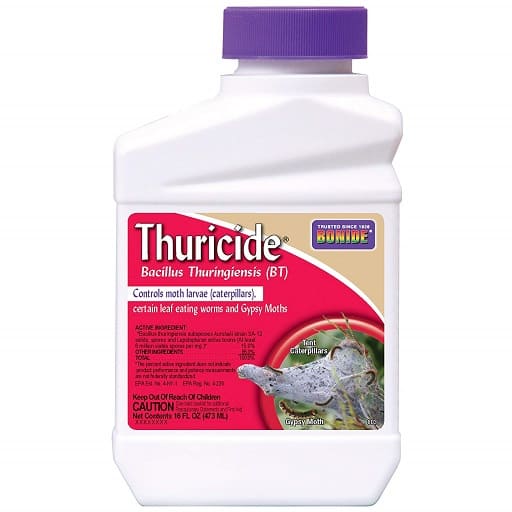
Bacillus thuringiensis (Bt) is a bacterium that is toxic to caterpillars, including tomato hornworms. Botanical BT is a commercially available product that contains spores of the Bt bacterium. When ingested by a caterpillar, the spores release toxins that kill the insect. Botanical BT is safe to use on organic gardens and is relatively non-toxic to humans and pets.
Diatomaceous Earth
Diatomaceous earth is a powder made from the fossilized remains of diatoms, tiny aquatic organisms. The sharp edges of the diatoms can damage the exoskeletons of insects, causing them to dehydrate and die. Diatomaceous earth is safe to use on organic gardens and is relatively non-toxic to humans and pets.
Pick Them Off by Hand
This method is perhaps the most direct and satisfying. Regularly inspect your tomato plants, especially the undersides of leaves, for the presence of hornworms. When you spot one, simply pick it off and dispose of it. Be sure to check for frass, the caterpillar’s droppings, as this can indicate their presence even if you don’t see them directly.
Conclusion
Tomato hornworms can be a serious pest, but there are a number of effective ways to prevent and control them. By using a combination of the methods described above, you can protect your tomato plants and ensure a bountiful harvest. Remember, early detection and swift action are key to managing this pest.
Here are some additional tips for preventing and controlling tomato hornworms:
Inspect your plants regularly for signs of hornworms, including frass (caterpillar droppings), damaged leaves, and the presence of the caterpillars themselves.
Remove any hornworms that you find by hand or knock them off into a bucket of soapy water.
Encourage beneficial insects, such as ladybugs and parasitic wasps, to your garden. These insects prey on hornworms and can help to keep their populations in check.
Keep your garden clean and free of debris. This will make it less attractive to hornworms and other pests.
Water your plants regularly, especially during hot, dry weather. This will help to keep your plants healthy and less susceptible to pests.
By following these tips, you can keep your tomato plants healthy and productive, and enjoy a delicious harvest of homegrown tomatoes.


